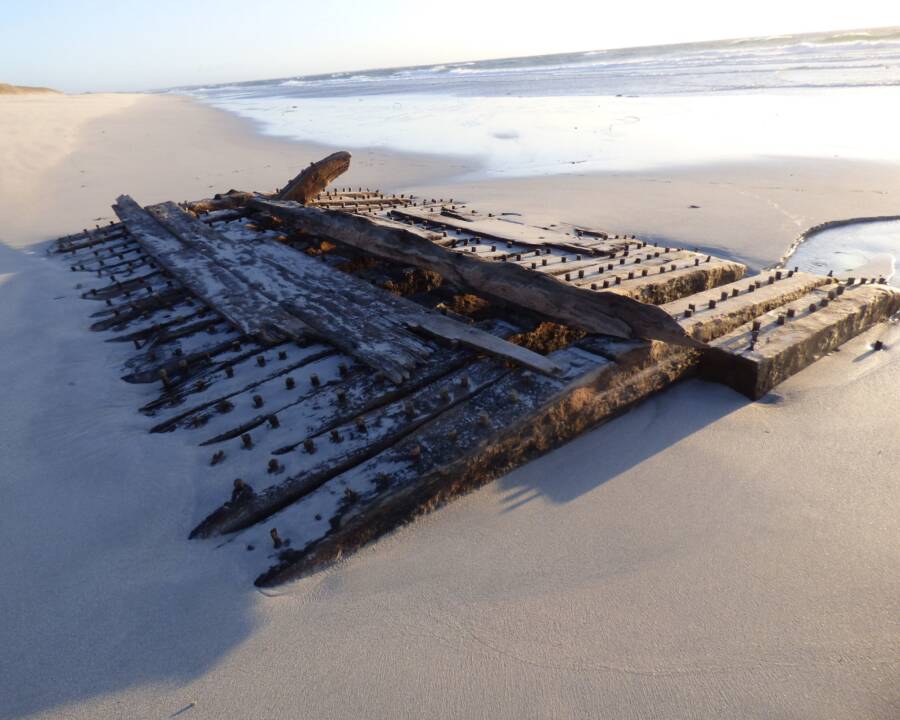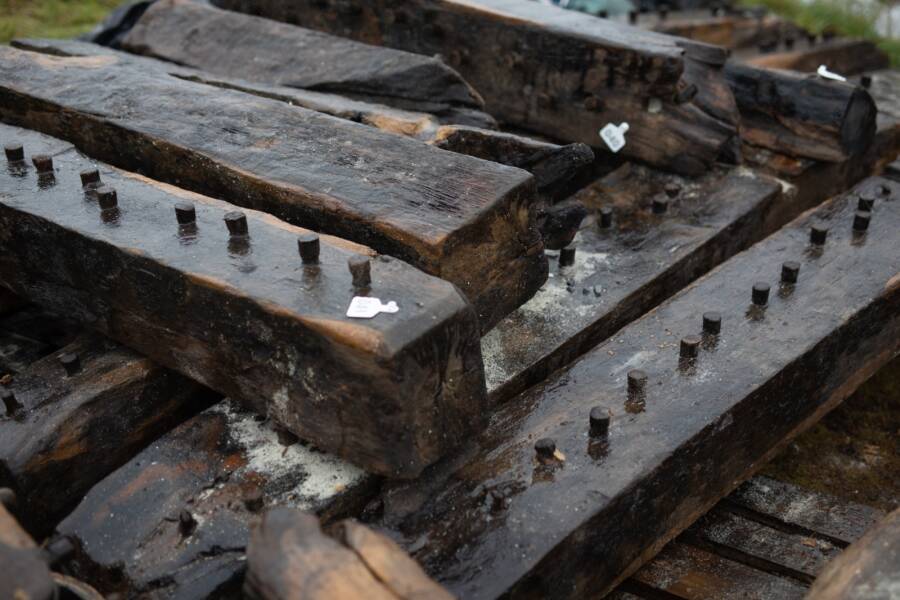The Scottish Schoolboy Who Discovered A 250-Year-Old Revolutionary War Frigate

Rod Thorne/Orkney Islands CouncilThe Earl of Chatham, once a Royal Navy vessel called the HMS Hind.
Back in February 2024, winter storms were battering the Scottish island of Sanday, but the destructive force of the winds inadvertently uncovered a curious piece of maritime history.
After the storms subsided, a local schoolboy walking along the beach spotted several peculiar wooden beams emerging from the sand dunes — a discovery that propelled his small island community into the international spotlight.
As Smithsonian Magazine reported, those wooden structures turned out to be the ribs of a ship, though its identity was initially unclear. The find quickly became the talk of Sanday, one of Scotland’s Orkney Islands with a population of just 500 people.
The island had long been known as Scotland’s “cradle of shipwrecks,” with roughly 270 wrecks discovered along its 20-square-mile coastline since the 1400s. Something about this discovery, however, felt different. Soon enough, it became the goal of this tight-knit community to uncover the ship’s secrets.
Using tractors, local volunteers carefully excavated 12 tons of oak timbers that had been buried beneath the sand for centuries.
Wessex Archaeology was then commissioned to help identify the mysterious vessel, but their research took more than a year to complete. Using dendrochronology — the study of tree rings — researchers determined that the ship had been built in the mid-1700s with wood sourced from southern England. By cross-referencing historical records of wrecks near the island and eliminating ships that didn’t match the size, origin, or time period, they narrowed down the possibilities.
In July 2025, the team announced the results of their analysis, concluding the wreck was a vessel known as the Earl of Chatham, originally built in 1749 as the HMS Hind, a 24-gun frigate in the British Royal Navy. The ship had lived multiple lives during its four-decade existence, serving first in Jamaica when it was a British colony, then participating in the sieges of Louisbourg and Quebec during the French and Indian War.

Fionn McArthur/Orkney Islands CouncilThe HMS Hind was used in various ways for nearly 40 years.
During the American Revolution, the HMS Hind played a crucial role in protecting British cargo and escorting convoys to and from the colonies. Between 1780 and 1781, the vessel proved particularly effective at intercepting American privateers, capturing at least four enemy ships.
After the war ended, the frigate was decommissioned in 1784 and sold to a London merchant who renamed it the Earl of Chatham. The ship was then repurposed for the Arctic whaling expeditions, joining approximately 120 other London-based vessels that made annual voyages to the icy waters of Greenland.
The ship’s story came to an end in 1788 when, en route to another Arctic whaling expedition, it capsized near Sanday’s coast. Fortunately, all 56 crew members survived the wreck.
“I would regard it as a lucky ship, which is a strange thing to say about a ship that’s wrecked,” Ben Saunders, the senior marine archaeologist at Wessex Archaeology, told the Associated Press. “I think if it had been found in many other places, it wouldn’t necessarily have had that community drive, that desire to recover and study that material, and also the community spirit to do it.”
Today, the carefully preserved ship timbers are displayed at the Sanday Heritage Center. The discovery was also recognized as one of Scotland’s five biggest archaeological finds of 2024.
As for the unnamed schoolboy who found it in the first place, thanks are in order for recognizing this valuable piece of history.





